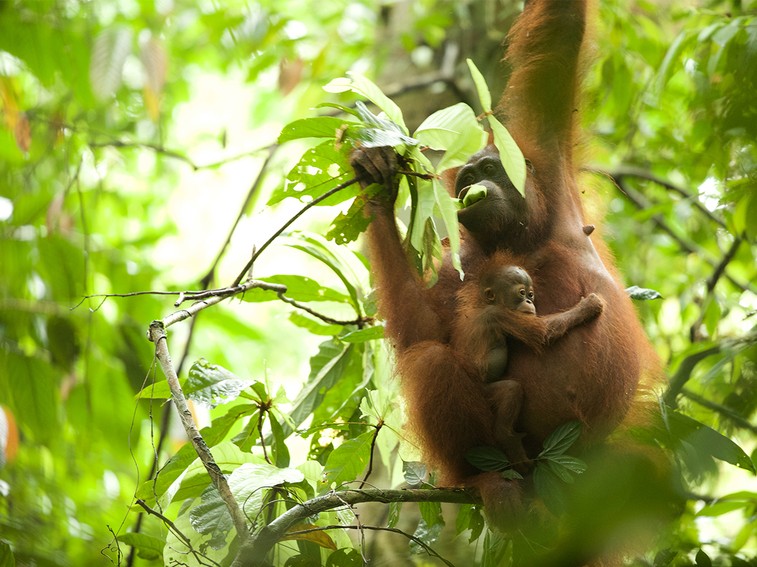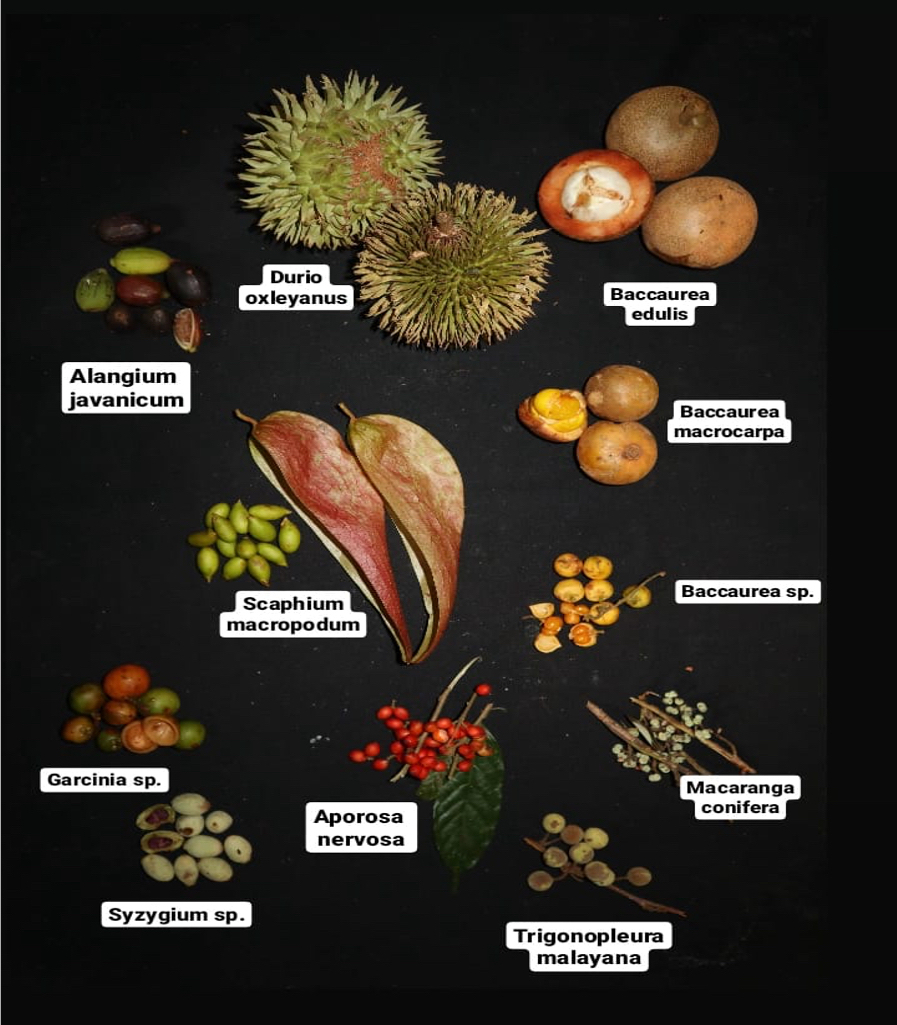
Project Overview
Our research project collects data on the caloric and nutrient intake of wild orangutans to understand their nutritional requirements. In particular, we are interested in how they meet their nutritional goals in specific habitats under differing levels of anthropogenic disturbance.
When we follow orangutans, we collect data on every feeding bout, including tree height, diameter at breast height of the tree or liana, food type, genus, species, food part consumed, feeding rates, and length of the feeding bout. For every orangutan feeding bout we observe, we collect plant samples, catalog species characteristics, measure and weigh by food components, and dry each food part to determine wet and dry weights. These samples are used to conduct food chemistry analyses, which we use to determine kilocalories consumed by orangutans per feeding bout, including total daily nutrient and caloric intake. As of 2021, we have collected data on over 70,000 orangutan feeding bouts, weighed and measured 2102 food samples, and analyzed the nutritional content of 218 plant foods. Overall, we have found that in Gunung Palung National Park, orangutans’ caloric intake fluctuates annually and that orangutan nutrient and caloric availability influences their ranging patterns.

Related Publications
Knott CD and A DiGiorgio. (in press). Seasonality in Food Availability and Energy Intake. In: JE Lambert and JM Rothman, (Eds.), Primate Diet and Nutrition. Chicago: University of Chicago Press.
DiGiorgio A, EM Upton, TW Susanto and CD Knott. (2020). Wild Bornean
orangutan (Pongo pygmaeus wurmbii) Feeding Rates and the Marginal Value Theorem. American Journal of Primatology.
DOI: 10.1002/ajp.23183
Vogel ER, CD Knott, BE Crowley, MD Blakely, MD Larsen, and NJ Dominy. (2012). Bornean Orangutans at the Brink of Protein Bankruptcy. Biology Letters. (8) 333-336.
Vogel ER, BC Crowley, CD Knott, MD Blakely, MD Larsen and NJ Dominy. (2012). A Non–Invasive Method for Measuring Nitrogen Balance in Free–Ranging Primates. International Journal of Primatology. 33: 567-587.
Russon A, SA Wich, M Ancrenaz, T Kanamori, CD Knott, N Kuze, H Morrogh–Bernard, P Pratje, H Ramlee, P Rodman, K Sidiyasa, I Singleton and C van Schaik. (2009). Geographic Variation in Orangutan Diets. In: SA Wich, SS Utami, T Mitra Setia and C van Schaik (Eds.), Orangutans Compared: Ecology, Evolution, Behaviour and Conservation. Oxford University Press: Oxford, p. 135-156.
Knott CD. (2005). Energetic Responses to Food Availability in the Great Apes: Implications for Hominin Evolution. In: DK Brockman and CP van Schaik (Eds.), Primate Seasonality: Implications for Human Evolution. Cambridge University Press: Cambridge, p. 351–378.
Felton AM, LM Engstrom, A Felton and CD Knott. (2003). Orangutan Population Density, Forest Structure and Fruit Availability in Hand–Logged and Unlogged Peat Swamp Forests in West Kalimantan, Indonesia. Biological Conservation. 114: 91–101.
Conklin–Brittain NL, CD Knott and R Wrangham. (2001). The Feeding Ecology of Apes. In: The Apes: Challenges for the 21st Century. Brookfield Zoo, Chicago, IL. p. 167–174.
Knott CD. (1998). Changes in Orangutan Diet, Caloric Intake and Ketones in Response to Fluctuating Fruit Availability. International Journal of Primatology. 19:(6) 1061–1079.
